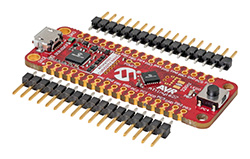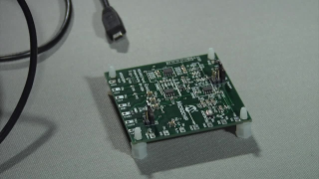The ATtiny1627 family of AVR® microcontrollers is equipped with high-speed integrated analog, hardware-based Core Independent Peripherals (CIPs) and low-power performance for efficient real-time control and sensor node applications. For design flexibility and to optimize your board layout, this family of 4 KB to 32 KB Flash devices is available in SOIC, SSOP and VQFN packages ranging from 14 to 24 pins. These tinyAVR® MCUs are well suited for a wide range of industrial, consumer, appliance, automotive, sensor node and other applications.
Key Features:
- Fast and accurate signal measurement with 12-bit differential Analog-to-Digital Converter (ADC)
- Measure small amplitude signals using the PGA
- Improve noise suppression with built-in hardware accumulation and oversampling of up to1024 samples











